When a lever door handle falls off, it can be both a security concern and a major inconvenience. Fortunately, fixing a fallen lever door handle is a straightforward task that can be done with a few basic tools and some simple steps. In this guide, we will walk you through the process of how to fix a lever door handle that fell off, ensuring it stays firmly in place and functions smoothly. From identifying the cause of the issue to securing the handle properly, our easy-to-follow instructions will have your door handle back in working order in no time.
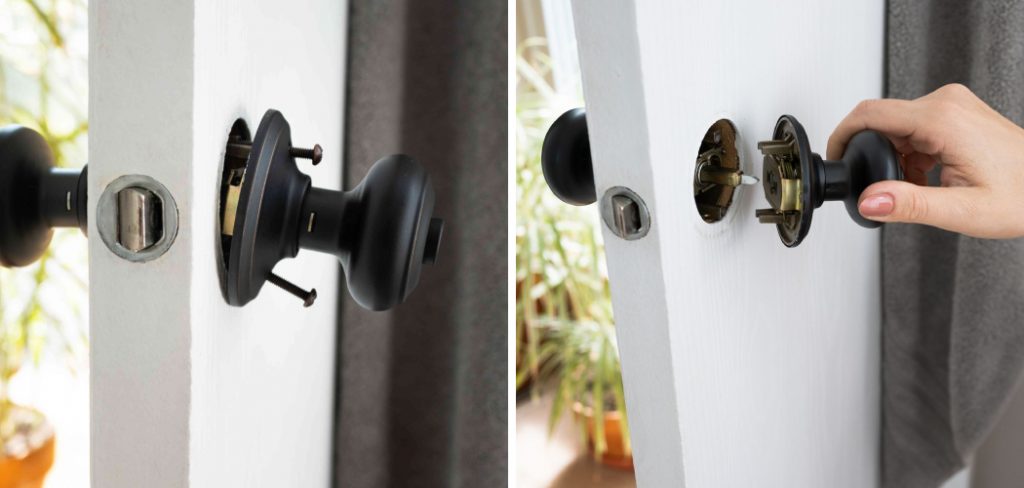
Importance of a Securely Attached Lever Door Handle
A securely attached lever door handle is essential for maintaining the safety and functionality of any door in your home or office. Primarily, a firmly fixed handle ensures that the door can be operated smoothly, providing easy access and egress. This is especially important in emergency situations where quick and unhindered exit is necessary.
Moreover, a properly attached door handle prevents the mechanism from malfunctioning, reducing the likelihood of being locked out or having to deal with partial door closures. Additionally, a secure lever handle contributes to the overall security of a space, as it can effectively deter unauthorized entry by making it difficult for intruders to tamper with the lock mechanism.
Common Causes of a Fallen Lever Door Handle
Understanding the common causes behind a fallen lever door handle can help you diagnose the issue more efficiently. One prevalent cause is the gradual loosening of screws due to regular use. Over time, the screws that secure the handle to the door can become loose, especially in high-traffic areas where the door is frequently opened and closed.
Another common culprit is poor installation. If the handle was not installed correctly in the first place, it’s more likely to come loose. Additionally, wear and tear of internal components such as the spindle or the latch mechanism can also lead to the handle detaching. In some instances, excessive force applied to the handle, either accidentally or through misuse, can cause it to fall off.
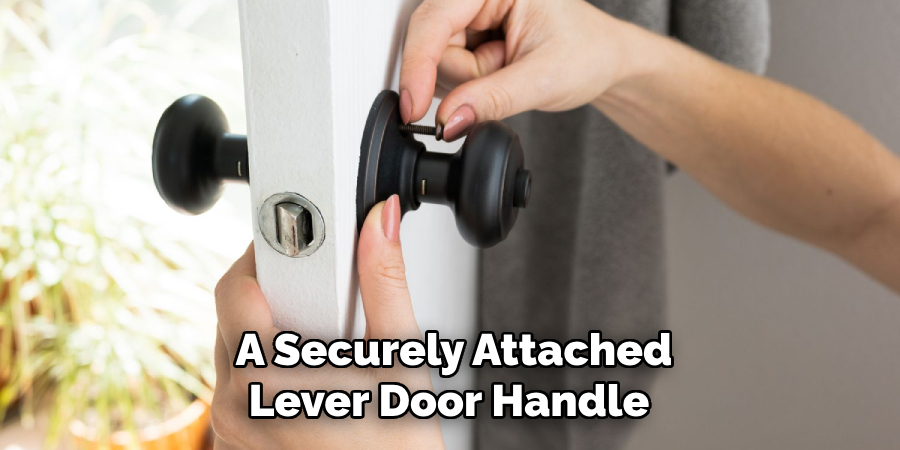
10 Methods How to Fix a Lever Door Handle that Fell off
Method 1: Inspecting the Lever Handle Assembly
When a lever door handle falls off, the first step is to inspect the entire assembly. Carefully examine both the interior and exterior components of the handle, checking for any signs of damage, wear, or missing parts. Pay close attention to the screws, spindle, and any internal locking mechanisms. Sometimes, the issue may be as simple as a missing or loose screw, while other times it could be a broken internal component. This thorough inspection helps identify the root cause of the problem, allowing you to determine the best course of action for repair. Ensure you have a clear understanding of the handle’s mechanism before proceeding.
Method 2: Tightening Loose Screws
One of the most common reasons a lever door handle falls off is due to loose screws. To fix this, gather a screwdriver that matches the screw heads on your handle. Start by positioning the handle back onto the door, aligning it with the existing screw holes. Insert the screws and tighten them securely, but be cautious not to overtighten, as this can strip the screws or damage the handle. If the screws were loose and you cannot tighten them enough, consider using longer screws or adding a thread locker for extra security. This method ensures the handle is firmly attached, preventing it from falling off again.
Method 3: Replacing Stripped or Missing Screws
If the screws holding the lever handle in place are stripped or missing, simply tightening them won’t resolve the issue. First, remove any remaining screws using a screwdriver. Take one of the stripped or damaged screws to a hardware store to find suitable replacements. Opt for screws made from durable materials, such as stainless steel, to ensure longevity. Insert the new screws into the handle and tighten them securely. If the screw holes are enlarged or damaged, you may need to use a larger screw size or fill the holes with wood filler before inserting the new screws. Replacing the screws ensures a stable attachment and prevents future problems.
Method 4: Realigning the Handle
Sometimes, a lever door handle may fall off because it has become misaligned. To fix this, first, loosen the screws holding the handle in place. Carefully reposition the handle so that it is straight and flush against the door. Ensure that the spindle and any internal locking mechanisms are properly aligned as well. Once the handle is correctly positioned, tighten the screws securely. Realigning the handle ensures that it operates smoothly and reduces the likelihood of it falling off due to misalignment.
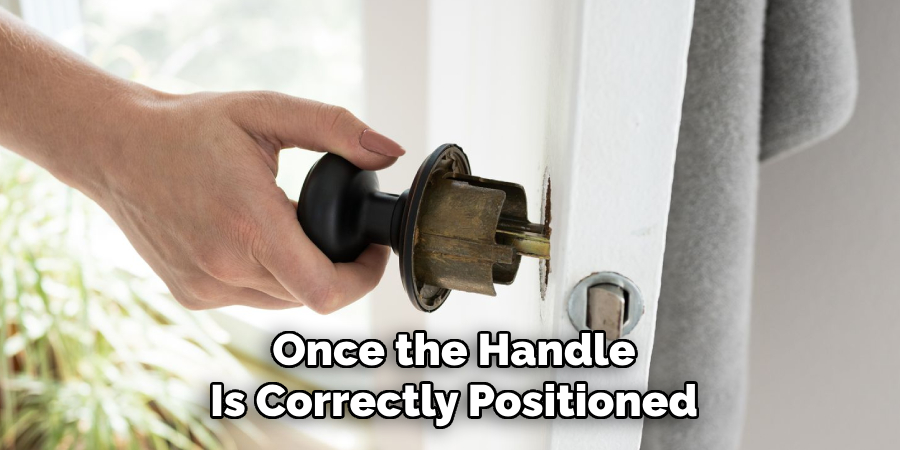
Method 5: Securing the Spindle
The spindle is a crucial component of a lever door handle, connecting the interior and exterior parts and allowing the handle to operate the latch mechanism. If the spindle is loose or damaged, the handle may fall off. To fix this, first, remove the handle to access the spindle.
Check if the spindle is intact and properly aligned. If it is loose, tighten any screws or fasteners securing it. If the spindle is damaged, replace it with a new one that matches the specifications of your handle. Reattach the handle and test its operation. Securing the spindle ensures the handle functions correctly and remains firmly attached to the door.
Method 6: Using Thread Locker
For lever door handles that frequently come loose, applying thread locker to the screws can provide a more permanent solution. Thread locker is a type of adhesive that prevents screws from loosening due to vibration or regular use. To apply thread locker, first remove the screws holding the handle. Clean the screw threads and the holes in the handle to ensure proper adhesion.
Apply a small amount of thread locker to the screw threads and reinsert them into the handle. Tighten the screws securely and allow the thread locker to cure according to the manufacturer’s instructions. This method provides added security and prevents the handle from coming loose in the future.
Method 7: Reinforcing the Mounting Holes
Over time, the mounting holes for the lever door handle can become worn or enlarged, causing the handle to become loose or fall off. To reinforce these holes, first remove the handle and inspect the mounting area. If the holes are damaged, use wood filler or epoxy to fill them in. Allow the filler to dry completely, then sand it smooth. Drill new pilot holes if necessary and reattach the handle with new screws. Reinforcing the mounting holes provides a solid foundation for the handle, preventing it from coming loose and ensuring a secure attachment.
Method 8: Replacing the Handle Assembly
If the lever door handle is severely damaged or worn out, replacing the entire handle assembly may be the best solution. Start by purchasing a new handle that matches the specifications of your existing one, ensuring compatibility with your door’s thickness and latch mechanism. Remove the old handle by unscrewing the screws and detaching it from the door. Align the new handle with the holes on the door and secure it with the provided screws. Test the new handle to ensure it operates smoothly and locks securely. Replacing the handle assembly restores the door’s functionality and provides a fresh, aesthetically pleasing appearance.
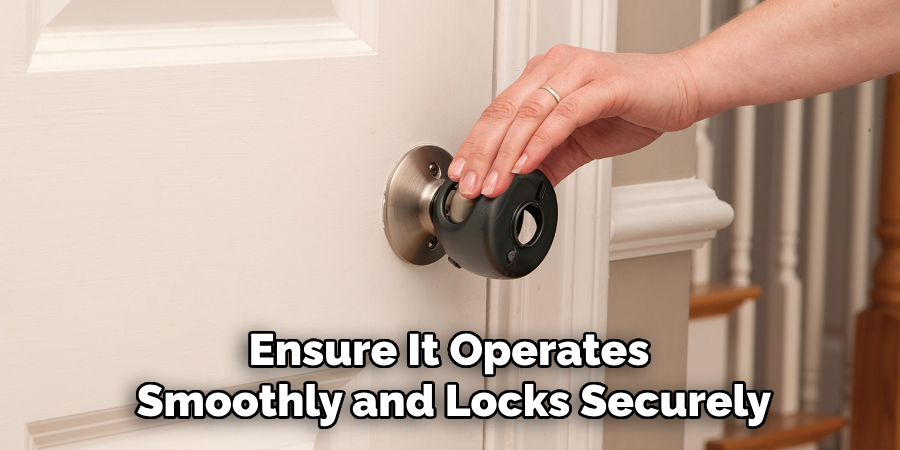
Method 9: Fixing the Latch Mechanism
A faulty latch mechanism can also cause a lever door handle to fall off. To fix this, start by removing the handle to access the latch mechanism. Inspect the latch for any signs of damage or wear. Tighten any loose screws securing the latch. If the latch is broken or damaged, replace it with a new one that matches your door’s specifications. Align the new latch with the existing holes and secure it with screws. Reattach the handle and test the door to ensure the latch engages properly. Fixing the latch mechanism ensures the handle operates correctly and remains firmly attached to the door.
Method 10: Consulting a Professional
If you have tried all the above methods and the lever door handle still doesn’t function correctly or falls off, it may be time to consult a professional locksmith or door repair specialist. A professional can diagnose and fix complex issues that may be beyond your expertise. They have the tools and experience to handle a wide range of problems, from misaligned mechanisms to damaged handles. Hiring a professional ensures that the job is done correctly and efficiently, restoring the full functionality of your lever door handle. This method provides peace of mind and guarantees a high-quality repair.
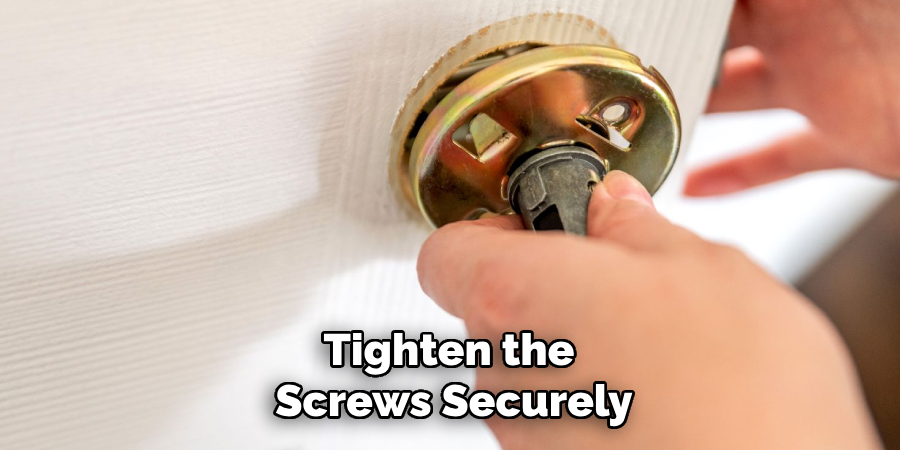
Conclusion
Maintaining and repairing a lever door handle can seem daunting, but with the right tools and methods, it is entirely manageable. Whether you’re replacing screws, realigning the handle, securing the spindle, applying thread locker, reinforcing mounting holes, replacing the handle assembly, fixing the latch mechanism, or seeking professional assistance, each method provides a viable solution to ensure your door handle remains functional and secure. Thanks for reading, and we hope this has given you some inspiration on how to fix a lever door handle that fell off!
About
Safety Fic is a distinguished figure in the world of Diy design, with a decade of expertise creating innovative and sustainable Diy solutions. His professional focus lies in merging traditional craftsmanship with modern manufacturing techniques, fostering designs that are both practical and environmentally conscious. As the author of diy, Safety Fic delves into the art and science of Safety Fic-making, inspiring artisans and industry professionals alike.
Education RMIT University
(Melbourne, Australia) Associate Degree in Design (Safety Fic) Focus on sustainable design, industry-driven projects, and practical craftsmanship. Gained hands-on experience with traditional and digital manufacturing tools, such as CAD and CNC software.
Nottingham Trent University
(United Kingdom) Bachelor’s in diyfastly.com and Product Design (Honors) Specialized in product design with a focus on blending creativity with production techniques. Participated in industry projects, working with companies like John Lewis and Vitsoe to gain real-world insights.
Publications and Impact
In diy, Safety Fic his insights on indoor design processes, materials, and strategies for efficient production. His writing bridges the gap between artisan knowledge and modern industry needs, making it a must-read for both budding designers and seasoned professionals.
